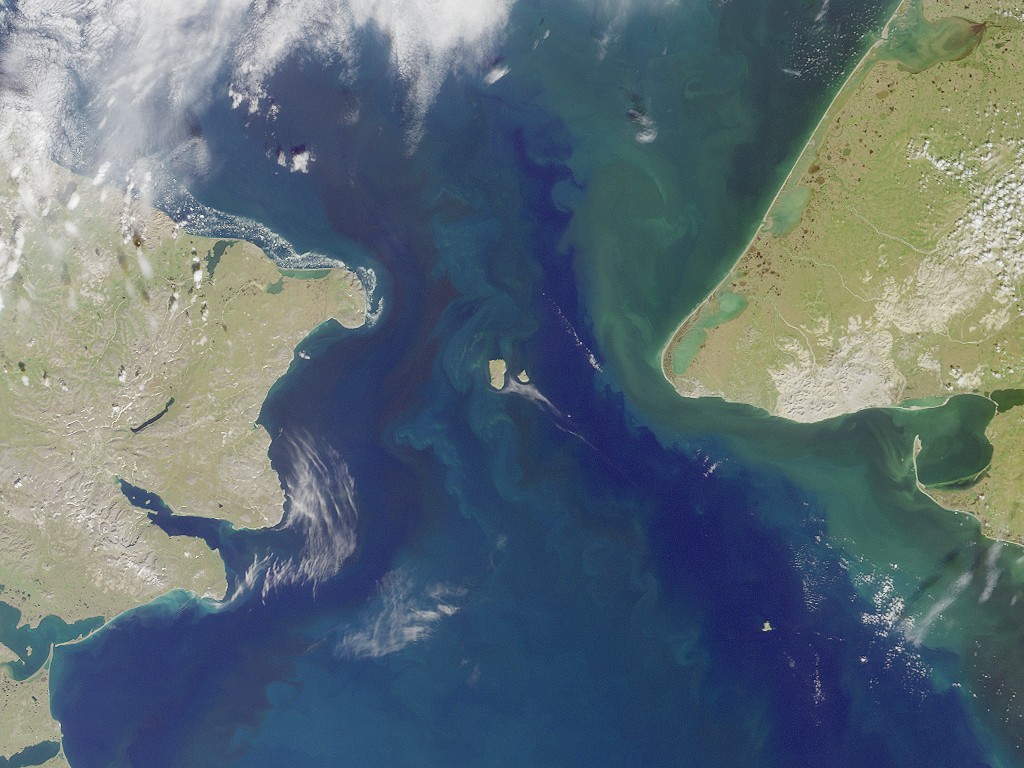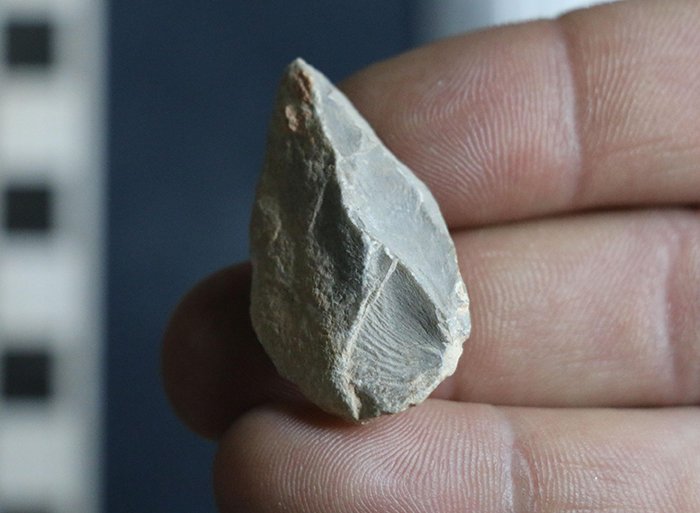Understanding when humans arrived in the Americas has always been a big puzzle to solve. For years, it has been accepted that humans arrived around 13,500 years ago, bringing the people who would spread across the continent to eventually become the Indigenous nations of North and South America.
But now a new study has blown that date away. Cave discoveries in central Mexico have revealed nearly 2,000 prehistoric handmade tools—some that date back at least 30,000 years. That would mean that the humans who made them date back over twice as long as previously thought! To understand how this changes what historians believed, we have to go back to one place.
The Bering Strait.
Ice crossing

Scientists believe that humans arrived in North America by crossing at the Bering Strait, which is the closest point between Asia and North America. (NASA/GSFC/JPL/MISR-Team)
Asia and the Americas are separated by the Pacific Ocean, the world's largest and deepest ocean. Even 13,000 years ago, crossing this body of water was beyond the technology that humans possessed. But they could walk.
After all, walking is how people first spread from central Africa across that continent (150,000 years ago), into Asia (70,000 years ago), and into Europe (45,000 years ago). Eventually, migrating humans found themselves on the doorstep of North America—the Bering Strait.
At the time, the Ice Age was happening, covering much of the Earth in huge glaciers and sheets of ice. This meant that there was an enormous ice bridge across the Bering Straight that allowed humans to walk over the ocean to this new frontier. For many years, historians have agreed that this is how humans arrived in North America. And they still do.
The only thing that this new cave discovery changes is the timing of that arrival.
Waiting for the door
Can't walk through that! Enormous ice sheets during the peak of an ice age would've made migration impossible for humans. (Getty Embed)
Previously, it was thought that humans came to Siberia (or far eastern Russia, next to the bering Strait) around 25,000 years ago. They then started to make the crossing through Alaska around 16,000 years ago, finally making it down into mainland North America 14,000 to 13,500 years ago. Why the big wait to cross? Well, they had to wait for the door to open.
Ice ages were not at a constant temperature and intensity all the time. They got warmer and colder gradually over time. During the coldest points—called a glacial maximum—the ice was so high and massive that it would've acted as a wall to human passage. The last glacial maximum was about 27,000 to 19,000 years ago. This is why researchers believed that ancient humans had to wait until 16,000 years ago to begin migrating to North America—because they had to wait for a corridor to open between the tallest glaciers so they could walk across.
They were here before

Tools found in the cave. (Ciprian Ardelean)
But these new discoveries show tools in North America dated back 31,000, even 33,000 years ago. How is that possible?
The answer—according to the researchers behind this study—is that humans were already in North America before that last glacial maximum. They didn't cross 16,000 years ago. They did it well over 30,000 years ago—before the huge ice sheets blocked their way.
But what about...?
Archeology is a slow process that requires patience and luck. (Getty Embed)
As mindblowing as this discovery is, it also raises a lot of questions.
For one, even though 1,900 stone tools were found in this cave site, not one human bone or piece of DNA was discovered. This is puzzling. People probably lived in this area for thousands of years. You'd think there would be some human remains found.
Secondly, this cave—Chiquihuite Cave—is in central Mexico. That's pretty far south. So why haven't we found any evidence of ancient civilizations throughout Canada or the United States that date back this long? After all, if humans crossed at the Bering Strait, they would've had to pass through there to reach Mexico! So where are they?
The truth? From dinosaur remains to human artifacts, discovering evidence of history takes luck and effort. There's almost certainly fossils and relics to be found. It is only a matter of time. But whatever the truth is, it's incredible to think just how long Indigenous people have been living on these lands.
 One of the ancient stone tools found by researchers. (Ciprian Ardelean)
One of the ancient stone tools found by researchers. (Ciprian Ardelean)










Amazing!